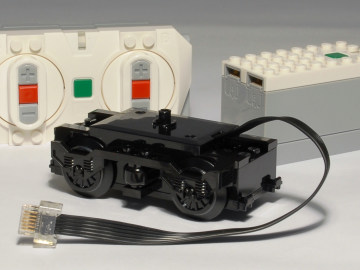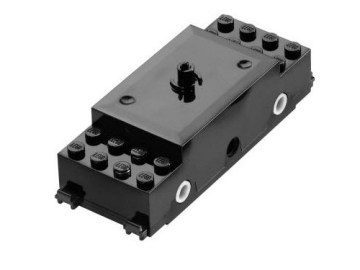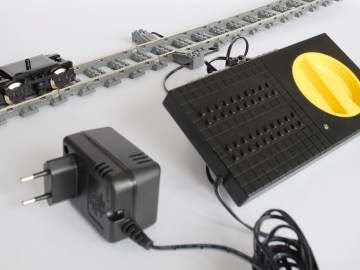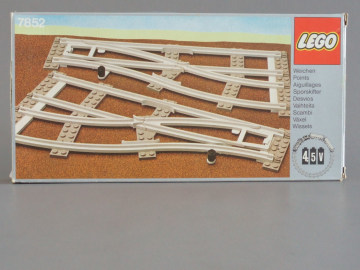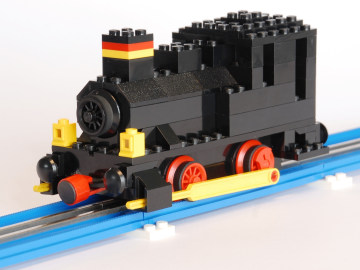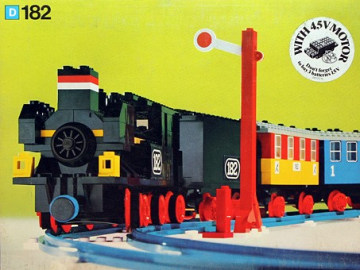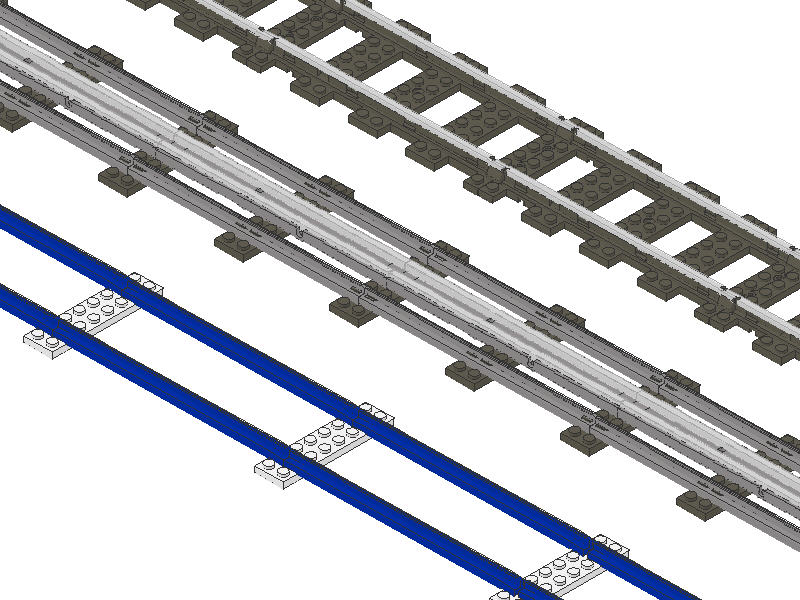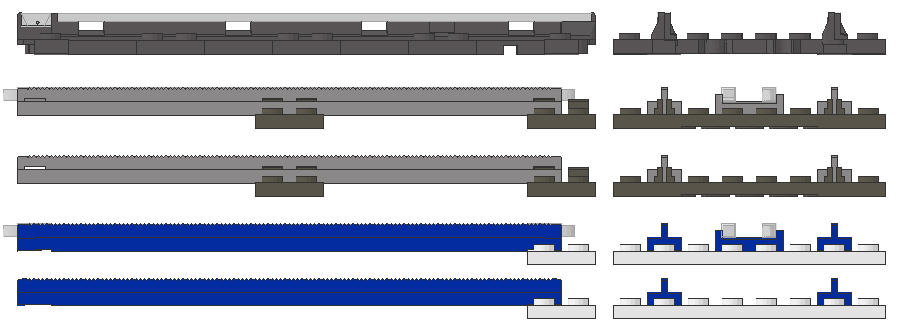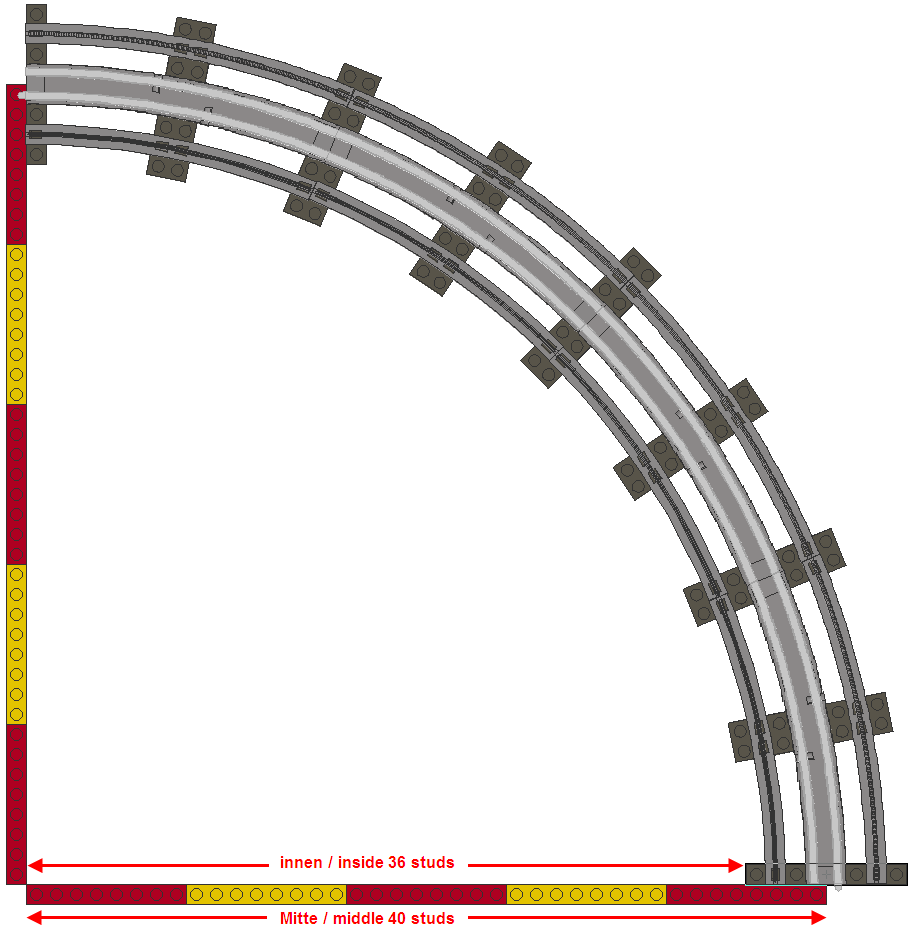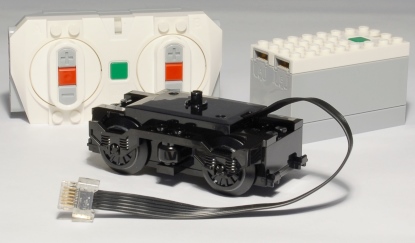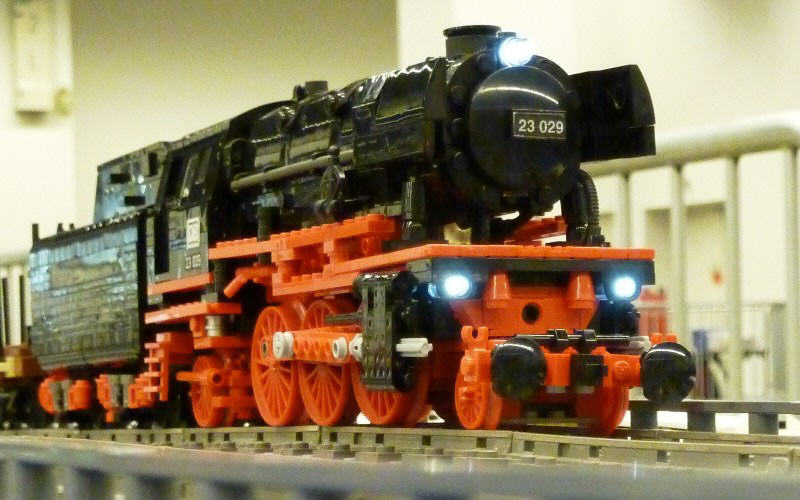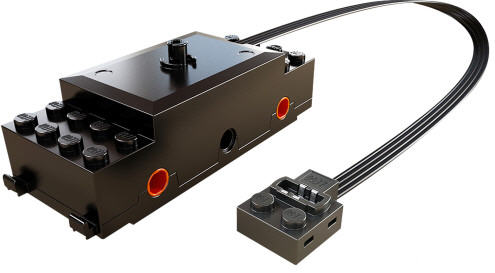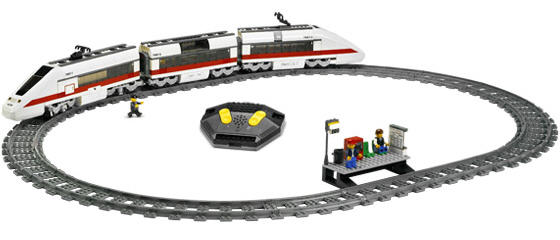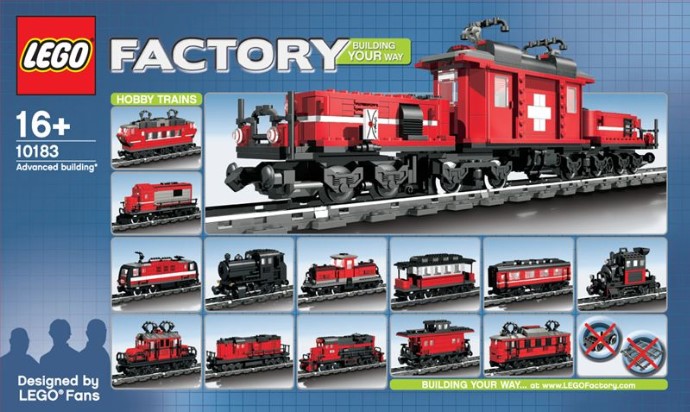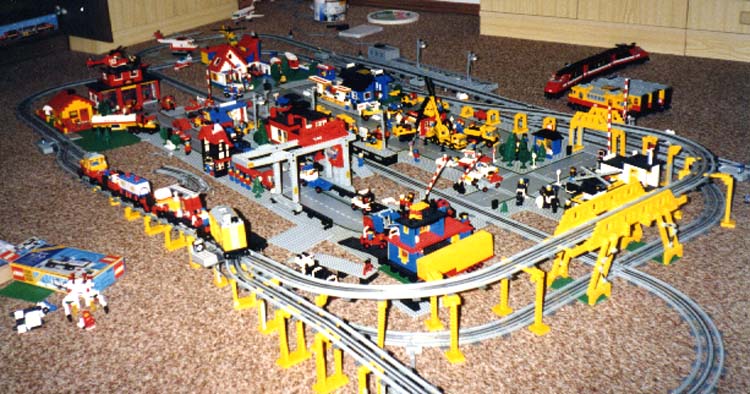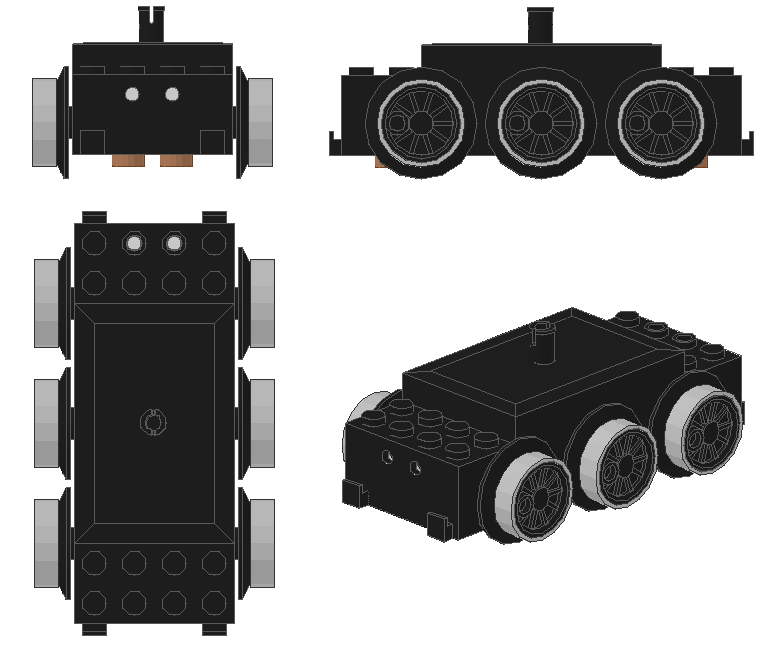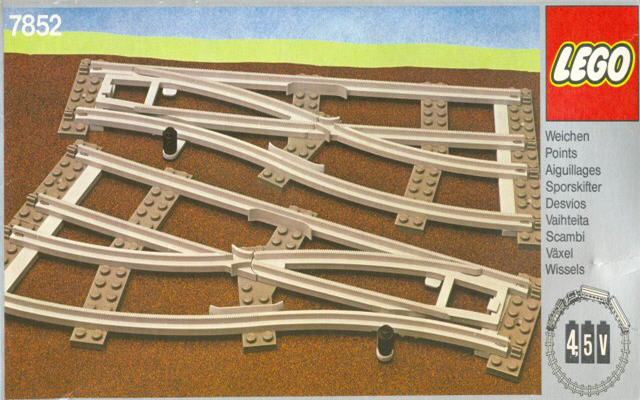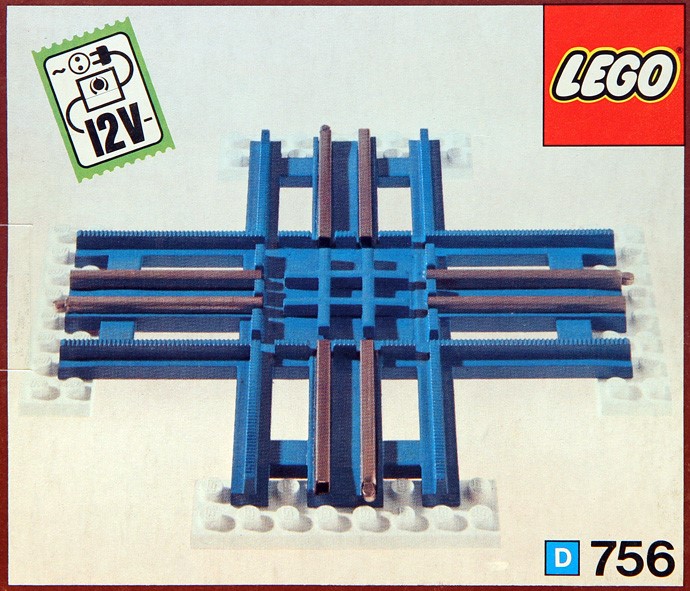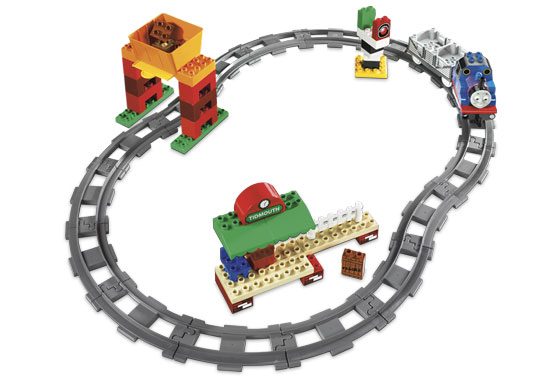LEGO Train Systems
During the last decades LEGO has re-invented its train system on and on. Looking at the rails and the drive by the train motors you'll find many different systems which – more or less – are compatible to each other.
First of all, the gauge of LEGO trains did not change over the years. The gauge is 6 studs (~38 mm or "L-Gauge").
It is not very easy to remain clear-headed …
The main important eras are:
Curve Radius
The radius of LEGO train track did not change over the various eras. From the middle of the track the radius is 40 studs. A larger curve radius however can be realised with a trick.
Various third party manufacturer offer further radii in the sizes 56 studs, 72 studs, 88 studs, 104 studs and 120 studs … and more!
Switch/Points Geometry
The geometry of LEGO train track switches/points was change with the 9 V system. The parallel track is now 8 studs aside the main track. The parallel track at the 4.5 V/12V system is directly at the main track without any gap.
Various third party manufacturer also offer different switches/points with larger radii.
Powered Up
In autoum 2018 the next generation of LEGO electronics was released: Powered Up. Powered Up trains carry their power on board and they could be used on all rail types.
The main difference to Power Functions is the signal transmission. Infrared is replaced by Bluetooth. The control can be done using an app on a mobile device with Bluetooth. Every smartphone and tablet has Bluetooth on board and LEGO offers its own app for remote control. In addition, there is still a separate Powered Up remote control #88010.
Instead of a receiver and the power supply now a "hub" takes over this task. It is as big as the Power Functions battery box, but also contains the electronics with the Bluetooth receiver in addition to the 6 AAA batteries.
Compared to the Power Functions system, however, only a maximum of two consumers can be connected to one hub; two train motors can not be connected in combination at one output. With one hub, either two train motors or one train motor and one light can be operated. From the point of view of the predecessor system a real step backwards.
Visible are the Powered Up components on the six-core cables and the new connectors. They are similar to known network connectors, but are LEGO-specific. Unfortunately, you can not connect multiple plugs to one output of the hub.
The Powered Up train motor #88011 gets power from the hub which is onboard. The cable is fixed attached to the motor. Train wheels are the same as in Power Functions.
The sizes of the Powered Up train motor, the Power Functions train motor and the 9 V train motor are identical.
For any new LEGO train fan who is just starting to build and collect LEGO trains I would recommend the latest system. Older systems will get expensive on the second hand market.
| Power: | Powered Up train motor #88011. |
| Type of rails: | plastic rails (no metal) |
| Rails: | straight and curved |
| Sets: | Passenger train #60197 and freight train #60198 |
Power Function Trains
Power Functions as standard system to electrify LEGO models found it's way to LEGO trains till 2017. Power Function trains carry their power on board and they could be used on all rail types. LEGO themselfs offer only plastic rails these days.
If you are more experienced in LEGO trains you will love LEGO train sets like Emerald Night #10194 ar Maersk train #10219. You can include your Power Function drive or any other electric system yourself.
Use the various Power Functions components and the Power Function train motor #88002 if you build your own train models, especially when it comes to steam engines. Meanwhile also various different train wheels are offered.
The Power Functions train motor #88002 draws power from batteries which are carried on the train.
A Power Functions cable is permanently installed in the motor. The wheels used are standard size train wheels with a Technic cross hole. A Technic axle with a length of 6 is used as the axle.
This motor was only available in black, the side panels (with recesses for the Technic axle) in black and light gray.
The external dimensions of the Power Functions train motors and the 9 V train motor are identical.
| Power: | Power Functions |
| Type of rails: | plastic rails (no metal) |
| Rails: | straight, curved, straight and flex-track |
| Sets: | Cargo train #7939, Passenger train #7938, 2011 Cargo train #3677, Emerald Night #10194, Maersk train #10219 |
RC Train
The RC (Remote Control) system by LEGO was just an intermediate solution. In 2006 the current-carrying 9 V track was out of production and the new Power Functions were not yet finished. Similar to the Power Function remote control a remote control was offered to control your RC trains. A bulky train base plate with integrated battery box and receiver was used for the train. This element did not get many fans amoung the real LEGO train fans because it is nearly useless while building your own creations. As motor the #8866 was used … a very weak motor.
With RC trains LEGO also established the plastic rails. They are compatible to the former 9 V track but the current-carrying metal is missing.
| Power: | Baseplate for trains with integrated battery box and receiver, motor #8866 |
| Type of rails: | plastic rails (no metal) |
| Rails: | straight, curved, points/switch (right/left), cross-over switch and flex-track |
| Sets: | Passenger train #7897, Cargo train #7898 |
9 V Train
From 1991 to 2004 the 9 V system was used for LEGO trains.
This system is recognisable by the current-carrying tracks and the metal wheels which pick up the power for the train motor. 9 V trains run very smoothly on the 9 V tracks and the tracks look quite realistic. That is way LEGO fans still like this system the best. This could be observed at the astronomic prices, especially for straight 9 V track pieces and 9 V train motors.
On 9 V track any other train powered by battery can run, e.g. Power Function trains or old 4.5 V trains.
The available geometries for tracks are limited. But using smooth curves or Fx Track you can expand the possiblities of this kind of track.
The 9 V train motor #5300/#10153 has permanently mounted metal wheels through which power is drawn from the 9 V rails.
There is a 9 V connection plate on the top to connect train lighting. (Conversely, this connection plate can also be used to supply this motor with power from a Power Functions battery box. Then this 9 V railway motor can also run on plastic rails.) The side panels can be removed.
This engine was only available in black, the side panels in black and light gray.
| Power: | 9 V Trafo, current-carrying rails, 9 V train motor #5300/#10153 |
| Type of rails: | current-carrying rails (~9 V track) |
| Rails: | straight, curved, points/switch (right/left), crossing |
| Sets: | Santa Fe #10020, Metroliner #4558, Hobby Train #10183 and many others … |
12 V Train (Grey Era)
The closest system to real model-railroading was the 12 V train system back in the 1980's. The powering of the trains was done by using a heavy speed regulator (trafo) which provided power through the current-carrying middle track elements for the 12 V train motor. The fun was even bigger when other remote controlled accessories like points/switches, signals, decoupling unit or a level crossing were used.
The rails were clipped on the sleepers. That made the track relative stable but setting up such a layout took some time.
Some of the 12 V trains sets, e.g. the steam engine #7750, are cult objects today and high prices are paid for sets in good condition.
Ben shows in his video Classic 12 V LEGO train 7740 running on Power Functions how to run a #7740 12 V train with Power Functions only with a slight modification on the Power Function cable. This shows hov compatible LEGO is, even beyond the system boundaries. Just attach older connectors to the two middle wires of the Power Function cable. Then you can plug-in this modified cable into older LEGO motors.
The 12 V train motor #7865 is supplied with power from the middle rails via contacts on the bottom. Plug connections on the motor (side and top) allow you to connect 12 V cables for train lighting.
This motor was available in black and (rarely) in red.
| Power: | 12 V speed regulator, current-carrying middle track element, 12 V train motor #7865 |
| Type of rails: | current-carrying middle track element (~12 V track), dark-grey sleepers with clip |
| Rails: | straight, curved, points/switch (right/left), crossing |
| Accessories: | Remote controlled level crossing #7866, decoupling unit #7862, signal #7860, fpoints/switch #7858/#7859, lighting #7861/#7867 |
| Sets: | Steam engine with tender #7750, Inter City #7740 and many others … |
4.5 V Train (Grey Era)
The 4.5 V train system of the Grey Era is a further development of the 4.5 V system from the Blue Era. It meant to be a "starter drug" into the 12 V system. It was easy to replace the 4.5 V motor by a 12 V motor and also the rails could be reused by just adding the additional current-carrying middle track element.
| Power: | 3x 1,5 V batteries in the battery car, 4.5 V train motor #107 and others |
| Type of rails: | plastic rails (no metal), dark-grey sleepers with clip |
| Rails: | straight, curved, points/switch (right/left), crossing |
| Sets: | Cargo train #7720 and a few others … |
12 V Train (Blue Era)
At the end of the 1960's LEGO offered the first 12 V system in parallel to the 4.5 V system. The powering of the trains was done by using a heavy blue speed regulator (trafo) which provided power through the current-carrying middle track elements for the 12 V train motor. The accessory assortement wasn't as big as till 12 V Grey Era times but remote controlled points/switchs were available.
| Power: | 12 V speed regulator, current-carrying middle track element, 12 V train motor x550a |
| Type of rails: | current-carrying middle track element (~12 V track), sleepers without clip (white 2x8 plates) |
| Rails: | straight, curved, points/switch (right/left), crossing |
| Sets: | Cargo train with rails #725 and others … |
4.5 V Train (Blue Era)
The set #182 from 1975 is one of the biggest sets from the blue 4.5 V era and it was the first LEGO train set I got as a child.
The 4.5 V systems uses batteries to power the train. These batteries are carried on board in a special battery waggon. The signal could stop the train and the direction switch made the train change directions.
The rails were single blue rails and as sleepers standard 2x8 plates were used. This arrangement wasn't very stable at all.
| Power: | 3x 1,5 V batteries in the battery car, 4.5 V train motor #107 u.ä. |
| Type of rails: | plastic rails (no metal), sleepers without clip (white 2x8 plates) |
| Rails: | straight, curved, points/switch (right/left), crossing |
| Sets: | Train set with signal #182 and many others … |
Other LEGO Train Systems
In addition to the “real” LEGO railway, there were and are the following “rail-mounted” systems from LEGO:
- Monorail Monorail sets at brickset.com
- Duplo trains Duplo at brickset.com
- Narrow gauge plastic rails in the Indiana Jones set „Temple of Doom“ #7199 and a few other sets.


